Este post também está disponível em:
Português
English
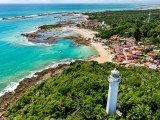
Morro de São Paulo is on the Dendê Coast is one of the most beautiful and trendy spots on the coast of Bahia.
Morro de São Paulo is part of the Bahian municipality of Cairu, located in the lower south of the state. The place is an island, which is part of the Bahian archipelago of Tinharé, and no tourist cars circulate there. Only 4×4 cars and motorcycles from tour agencies, quad bikes, and wheelbarrows.
The quiet village of 20 years ago has given way to a bustling Morro de São Paulo, full of inns, restaurants on Rua Caminho da Praia, stores and lively nightlife.
Praça Aureliano Lima, in the center of the village, has been paved with stones, and, on the Second Beach, a wooden walkway has facilitated circulation to the beginning of the Third Beach.
One feature, however, remains untouched: the beauty and tranquillity, especially from the Third Beach towards the south of Tinharé Island.
The main points of excitement in Morro de São Paulo are Rua Caminho da Praia and Segunda Praia.
The closest to the village is the Fifth Beach, also known as Encanto. In fact, it is just an extension to the south of the Fourth.
See the map of the Costa do Dendê
On the Boipeba Island are four jewels of the Brazilian coast, the beaches of Cueira, Moreré, Bainema and Ponta de Castelhanos. It is only 50 minutes away, but it seems like another world, such is the tranquility of the place.
Watch the video about the beauties, gastronomy and leisure options of Morro de São Paulo in Bahia:
To get to the island, there are two alternatives: charter a speedboat or, a more economical option, take the boat trip through the south of the island; in high season, the boat can take you exclusively to the scenic Moreré — in all cases, departures are from Terceira Praia.
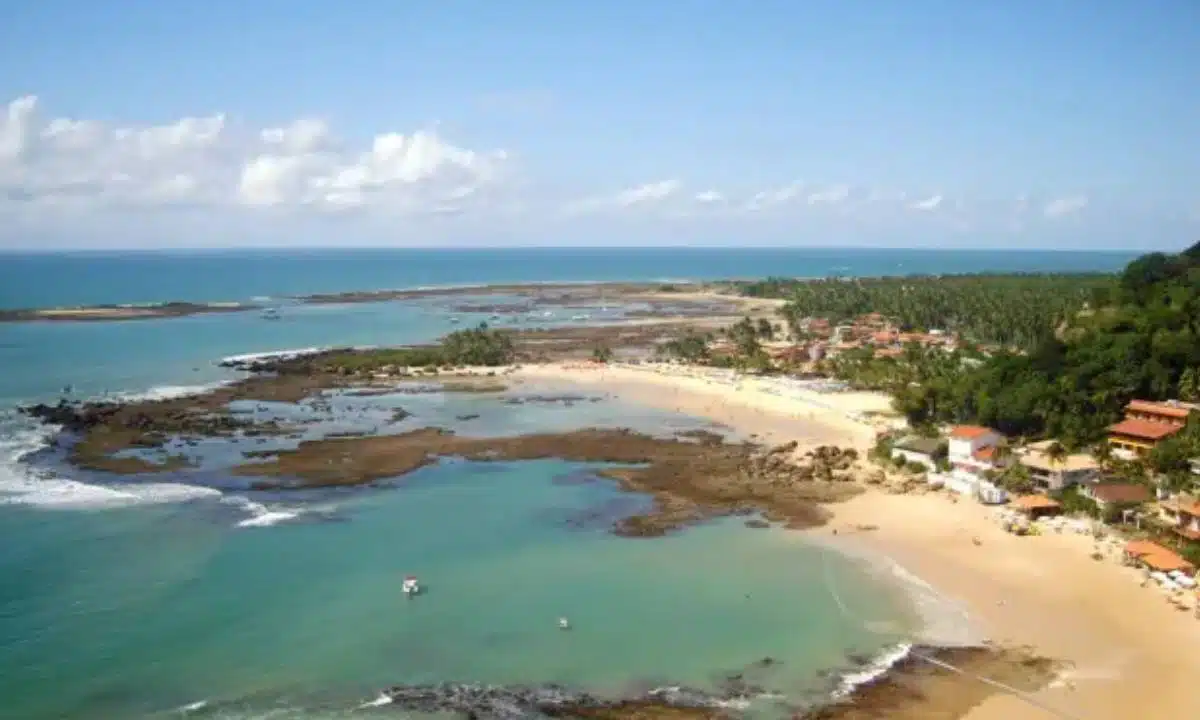
Videos about Morro de São Paulo
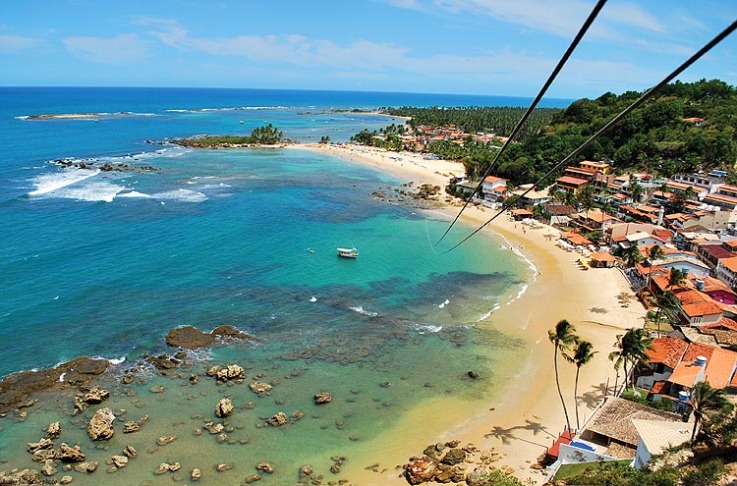

Morro de São Paulo na Bahia
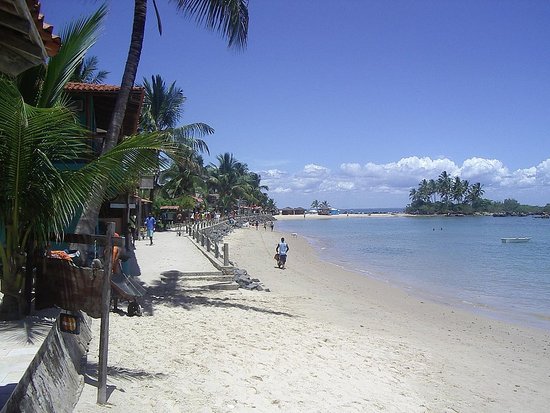
Morro de São Paulo - Dicas
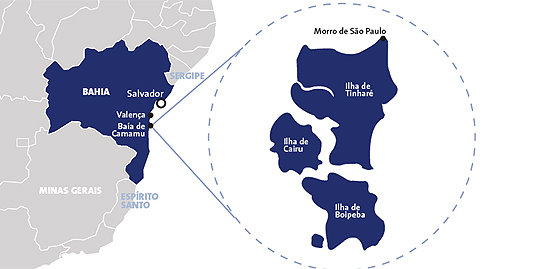
Morro de São Paulo e Tinharé
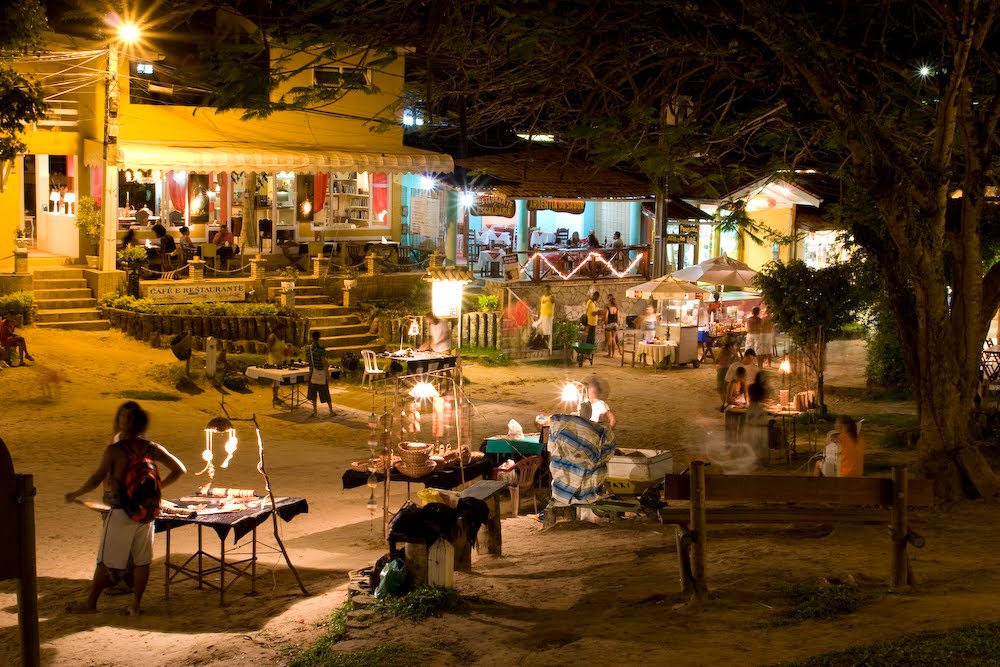
Morro de São Paulo a noite
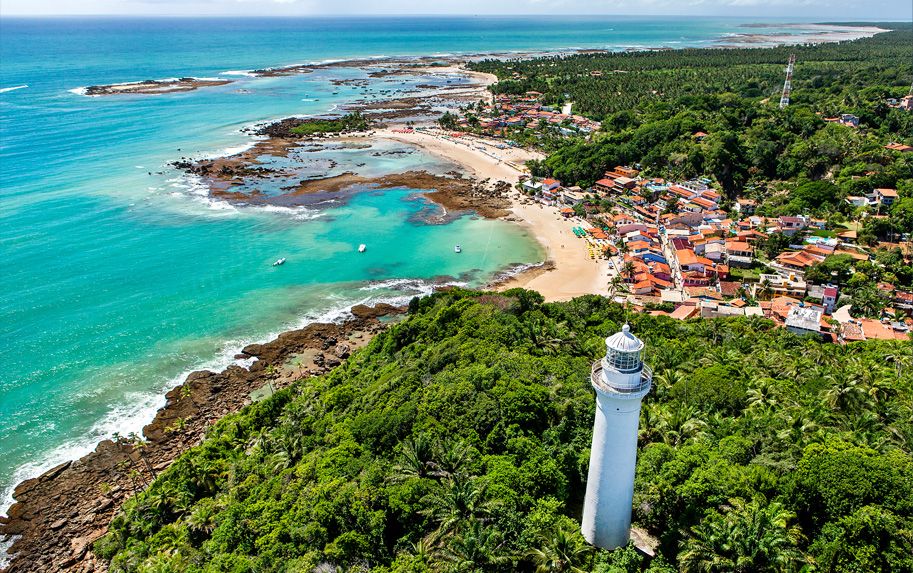
Morro de São Paulo - Reportagem Completa
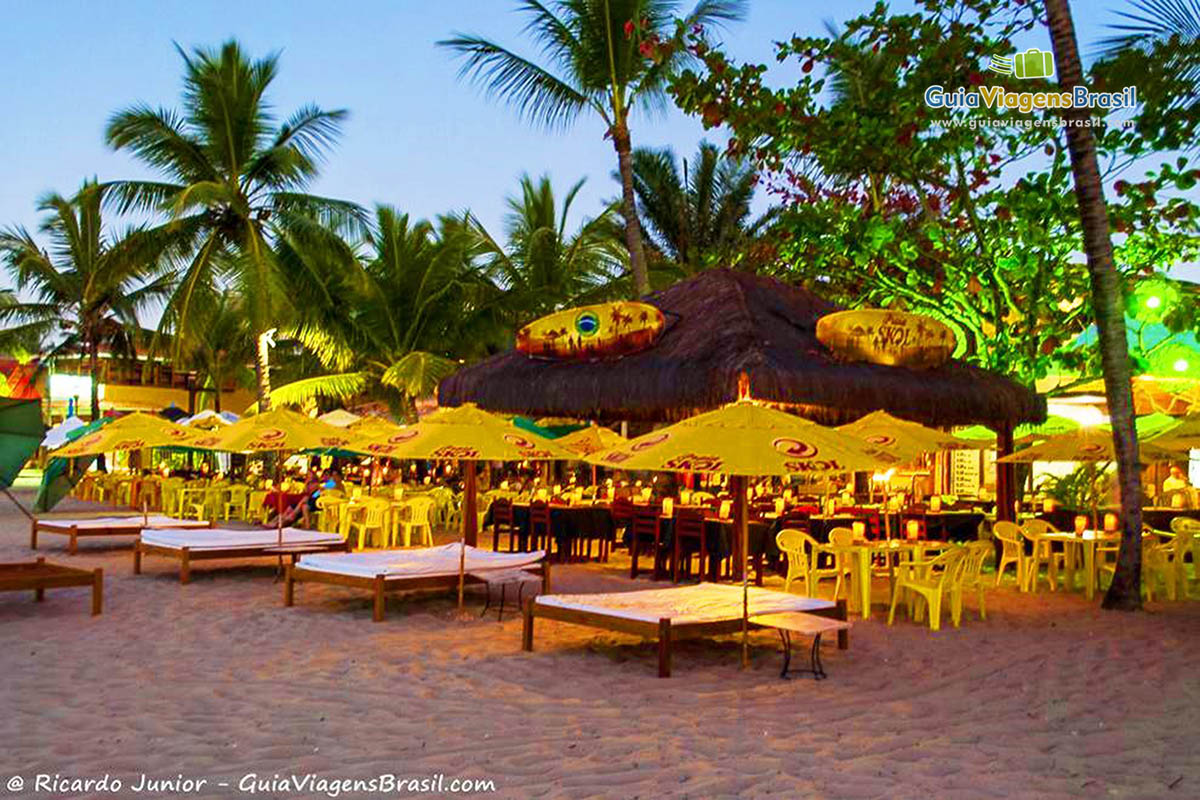
Noite em Morro de São Paulo o que fazer?25:49

O que não te contaram sobre Morro de São Paulo25:49
BEACHES OF MORRO DE SÃO PAULO
The main beaches of Morro de São Paulo are located to the south and are called: First Beach, Second Beach, Third Beach, Fourth Beach and Fifth Beach which is also known as Praia do Encanto.
All these beaches, with their well-known warm and transparent waters, provide us with the “true sea bath”, and allow us a total connection with nature.
The Fourth and Fifth Beaches are practically deserted beaches, they are true oases of tranquility.
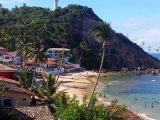
The Second Beach is known for its hustle and bustle, both during the day and at night.
On the north side of the village of Morro de São Paulo there is also Porto de Cima Beach, Ponta da Pedra Beach and Gamboa Beach. These beaches are better known by the locals, they are little frequented by tourists.
1. First Beach
The First Beach is the closest to the village. The first summer houses were built on it.
It is the beach most frequented by locals.
There are some tents where typical Bahian cuisine is served, and it is also on the First Beach of Morro de São Paulo that is the largest zip line in Brazil, where tourists usually enjoy the adventure and enjoy the landscape of the place.
2. Second Beach
The Second Beach is the busiest and also the most popular beach on the island of Tinharé.
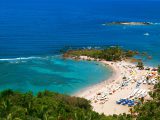
This is where all the excitement of Morro de São Paulo is. There is a complex of bars and restaurants that guarantee a good service to tourists, and this is where all the nightlife is announced.
At night it has a diversity of craft stalls and typical drinks such as “caipifrutas”, and it is here that the “luau” takes place, with lots of music and axé.
3. Third Beach
The Third Beach of Morro de São Paulo has a large complex of inns and restaurants, and it is from here that the boat trips offered by local agencies depart.
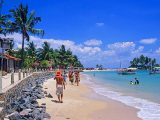
The strip of beach becomes quite narrow in case of high tide. The Pousadas and hotels found on Terceira Praia have a great diversity of prices, there is something for all tastes and pockets.
4. Fourth Beach
The Fourth Beach of Morro de São Paulo is known for its calm, warm and crystal clear waters.
For the vast presence of the typical coconut trees of the region and for its extension of more than four kilometers of peace and tranquility that provide us with an unforgettable walk by the sea.
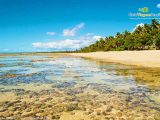
5. Fifth Beach
The Fifth Beach is located six kilometers from the village, and is the best preserved of the island.
There are two kilometers of fine white sand, transparent and warm waters where we find mangroves and we can have contact with the Atlantic Forest.
An immense coral reef gives shape to several natural pools, where we can dive and observe the marine life in this ecological paradise that is the Fifth Beach or also called Praia do Encanto de Morro de São Paulo.
6. Gamboa Beach
Gamboa Beach is located in the north of the island. It is on its way that we find Porto de Cima Beach and Ponta da Pedra Beach.
Gamboa do Morro de São Paulo is a fishing village, still little frequented by tourists.
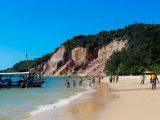
It has a great infrastructure for visitors.
There are several tents by the sea, where the typical cuisine of the region is served, usually made by the families of fishermen who know how to offer hospitality and please the palate of tourists.
SUGEST ROUTEWAYS
- 2 days
Discover all the beaches of Morro de São Paulo. Stay one day on the First and Second, which are more agitated, and reserve a period for the walk from the Third to the Fifth beach, more untouched.
The sunset at the Morro Lighthouse is not to be missed.
- 4 days
Reserve one day for the return trip to the island, which passes by the natural pools of Garapuá Beach and stops at Moreré, on Boipeba Island.
On another day, snorkel and dive in the reefs of the Second, Third and Fourth beaches.
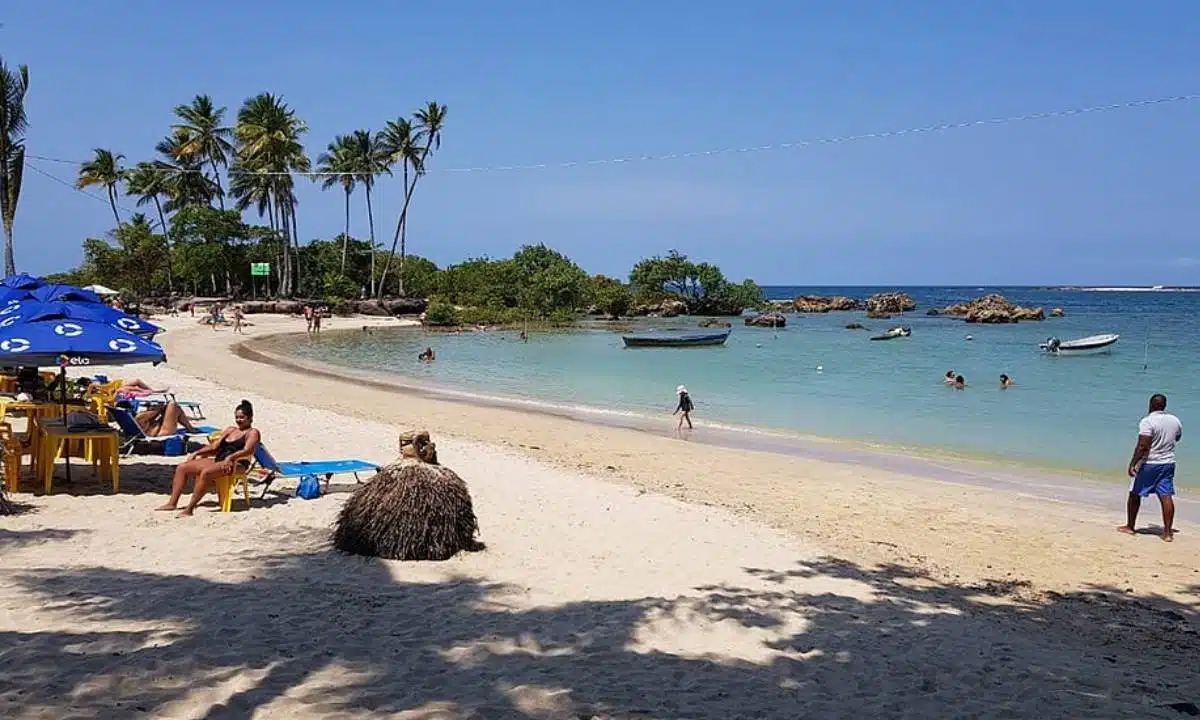
HOW TO GET THERE
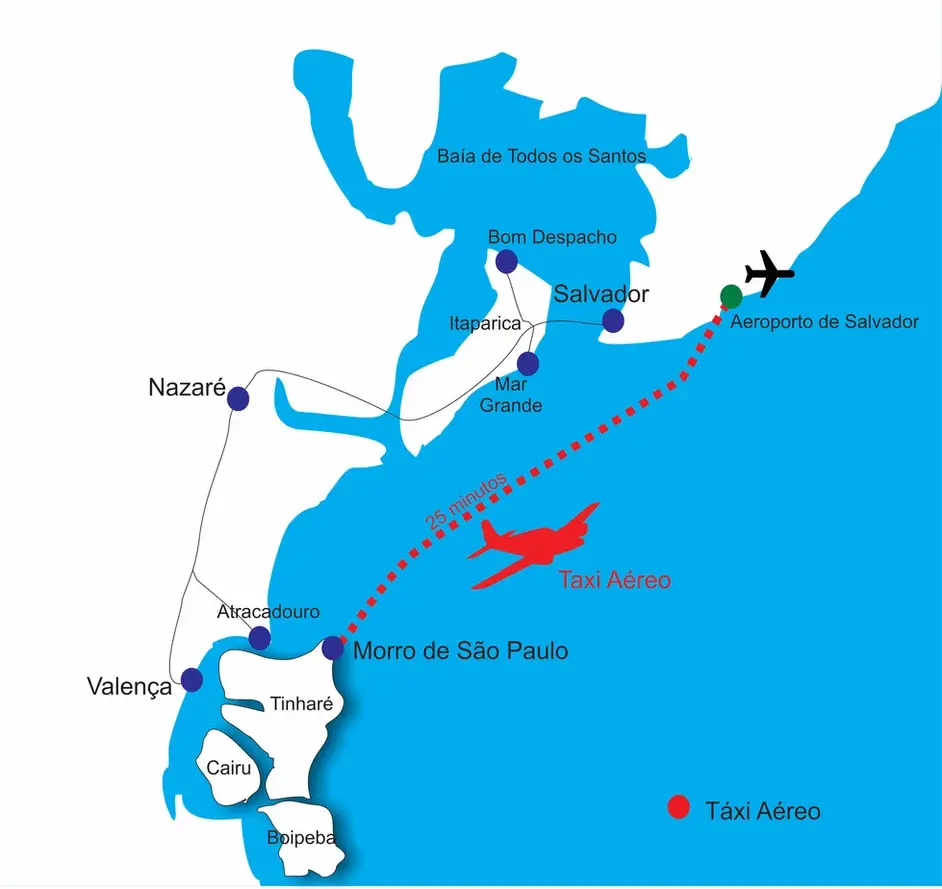
As previously stated, the island of Morro de São Paulo is not accessible by car. To get there, you necessarily need to take some sea transportation. But there are different ways to go to Morro. Check them out:
1. Semi-terrestrial
The first step is to take the ferry in Salvador to Bom Despacho, on Itaparica Island. From there, you can opt for a car, bus or transfer to get to Valença.
In Valença, you will stop in one of the several parking lots near the pier – if you are by car – and take a boat or speedboat to Morro de São Paulo.
If you choose the bus, the ticket can be bought at the bus terminal in Bom Despacho. If you prefer, you can buy in advance through the website of Clickbus (put Bom Despacho as origin and Valença as destination).
The journey by car takes approximately 2 hours, while the ferry crossing takes about 50 minutes. The crossing from Valença to Morro de São Paulo takes about 30 minutes. The ticket must be purchased on the spot.
2. Land route to Valença
You can go to Itaparica Island by car. To do this, leave Salvador via BR-101 to Santo Antônio de Jesus, continue to Nazaré das Farinhas, via BA-028, and finally travel BA-001, which connects Nazaré to the island. The route, from the beginning of the BR-324 to the Bom Despacho terminal, takes about 3h30 (270km).
From the island, go to Valença. There, in Valença, you will stop at one of the several parking lots near the pier – if you are by car – and take a boat or speedboat to Morro de São Paulo.
3. Catamaran
Catamaran is the fastest option to get to Morro de São Paulo. The boat leaves from the Maritime Terminal – near Mercado Modelo – and goes straight to Valença. The crossing lasts about 2 hours.
However, due to the fact that the boat sways a lot, it is common for many people to get seasick.
4. Air taxi
This is one of the options, but of course stop who can. If you have money, you can take a direct air transfer to Morro de São Paulo. There on the island of Tinharé, the plane lands at the regional airport of Cairu.
HOW TO CIRCULATE
The only vehicles allowed on the island of Morro de São Paulo are tractors, gardeners and cars from inns and tourist agencies. Even so, from the pier to the Third Beach you can only go on foot.
From the beginning of the Fourth Beach, you can hire a carriage.
On arrival, porters can take luggage in wheelbarrows.
Where to stay in Morro de São Paulo
There are several good pousadas in Morro de São Paulo, with basic facilities.
The best is the Pousada Villa dos Corais, on Terceira Praia.
Other recommendations are Vila dos Orixás and Anima (both on the Fifth Beach), Villa dos Graffitis (Second Beach), Pousada Fazenda Caieira (Third Beach) and Charme Pousada, in the village.
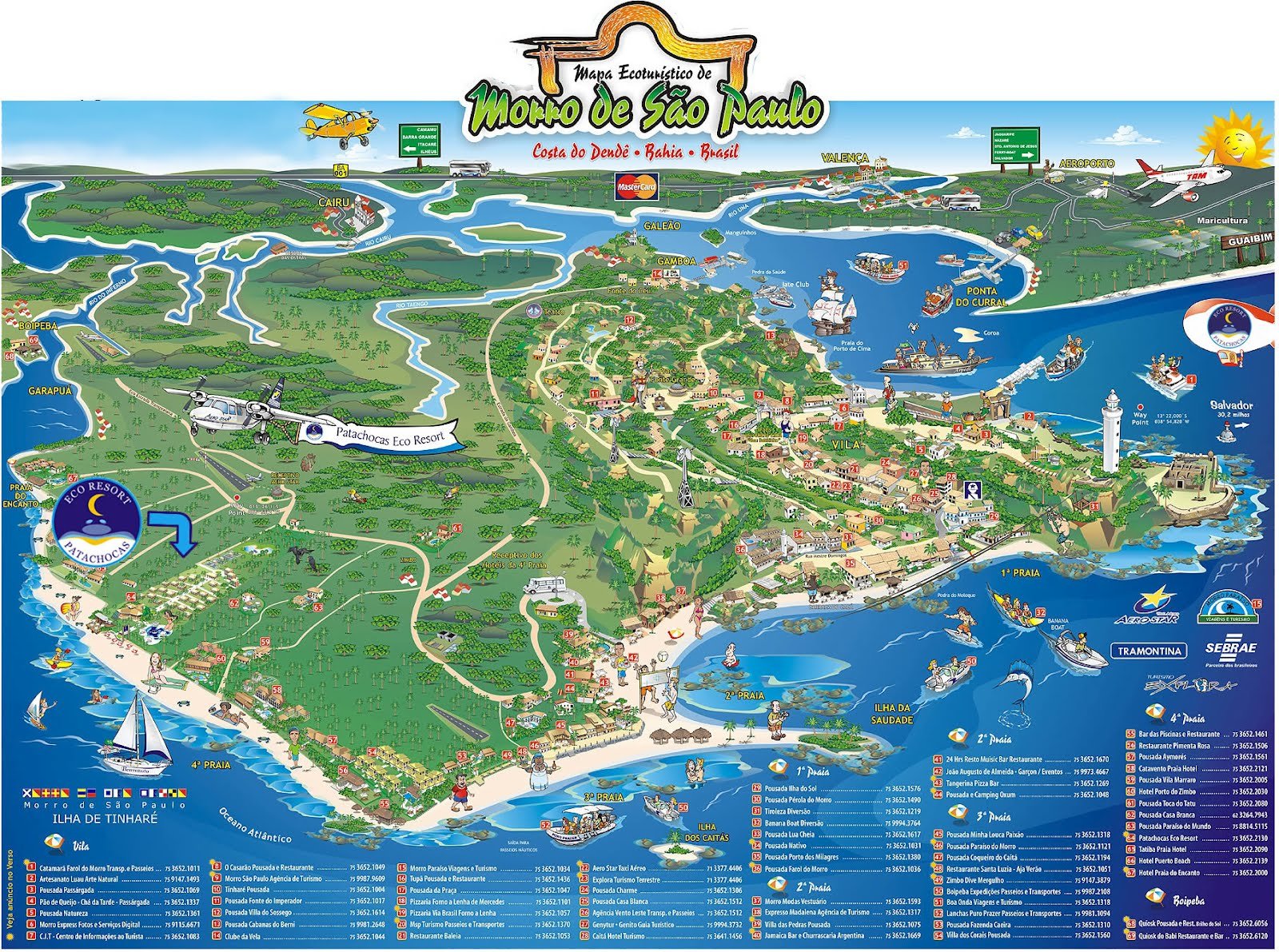
WHEN TO GO
Morro has a stable climate for most of the year and the sun always appears on the island. Rainfall is well distributed throughout the year, which means that it is difficult to spend several days with closed weather. In other words, it is a good time of year to go to the beach in any season.
However, for those who like more excitement and movement, summer is the best time to go to Morro de São Paulo. Between the months of December and February, parties are frequent, the weather is perfect for a good swim.
NIGHT LIFE
The warm-up begins at sunset in Morro de São Paulo: the Toca do Morcego bar (8106-6305), at the beginning of the climb to the Lighthouse, has a lively happy hour, almost always with live music.
Afterwards, it’s worth having a caipirinha at the stalls on Rua Caminho da Praia and Praça Aureliano Lima, in the center of Morro.
Or head straight to Pulsar Disco, on the way to Fortaleza, which promotes the foam party on Saturdays. At Segunda Praia, the movement occurs after midnight, with luaus and music of all kinds.
HISTORY
Morro de São Paulo is not a place known only for its natural beauty and rich culture. This island also breathes a lot of history. Its discovery was in the year 1531, attributed to the Portuguese navigator Martin Afonso de Souza. It had great influence in the colonial period and in its history was the target of piracy and smuggling of goods.
It even witnessed the Second World War when the Nazis torpedoed and sank the ships Arará and Itagiba in front of the First Beach of Morro de São Paulo. This caused Brazil to enter the Second World War.
Before the Portuguese arrived in Morro de São Paulo who lived in these lands were the Aimorés and Guerés Indians. The settlement arrived only when in 1534 the current King of Portugal D. João III divided the coast of Bahia into three captaincies, one of them the Captaincy of Ilhéus, where the archipelago of Tinharé is present where Morro de São Paulo is. Thus, on St. Paul’s Day (July 29) Lieutenant Francisco Romero chose Morro de São Paulo to be the seat of the captaincy.
The first European settlement appeared. The headquarters did not last long and was changed location. However, colonization continued and did not stop. And its function as a strategic location also continued.
In 1630 the Tapirandú Fortress was built to defend the capital from Dutch attacks and the theft of goods. The construction of the Nossa Senhora da Luz Church, named after its patron saint, took place in three stages, the first of which was in 1628. Its completion was only in the year 1845.
The houses and the population were increasing, and in 1746 the works of the Fonte Grande began so that the population and the troops had a water supply. Former residents say that not so long ago the residents took collective baths due to the lack of piped water.
In 1848 the construction of the Morro de São Paulo Lighthouse was started. It was built in order to facilitate access to the city of Valença.
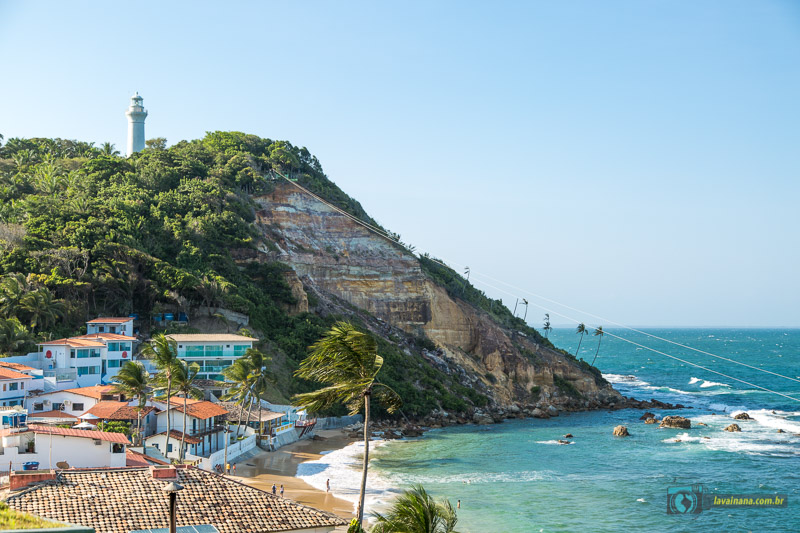
Until recently it was still a quiet place to live. Locals say that their livelihood was basically fishing. A small village where until the 70’s there was no telephone or electricity. Electricity only came to the island in 1985.
Today Morro de São Paulo is one of the most sought after tropical destinations by tourists from all over the world. But this was not always the case. In the 70’s when the first vacationers came to the quiet village, they could not imagine what was about to happen.
Vacationers who rented fishermen’s houses began to build their own vacation homes. And when the backpackers and hippies discovered the island they spread through their reports the beauty and enchantment of the place.
Then the tourists arrived and the houses of the small village became hotels, inns and restaurants. But of course, still maintaining its natural beauty. However, the growth did not and the disordered constructions began to appear as well. But Morro de São Paulo is still a piece of paradise that enchants its residents and visitors, who sometimes in love with the place decide to exchange the hectic city life for a charming island.
There are so many foreigners and people from all over Brazil living in Morro de São Paulo that the place already has an eclectic culture that incorporates them. It is certainly a beautiful place to live or just visit.
CRONOLOGY
Morro de São Paulo protected the so-called “false bar of the Bay of All Saints”, strategic entrance to the Itaparica Channel to the Forte de Santo Antônio (current Farol da Barra); and the Tinharé channel was essential in the flow of production from the main centers to supply the capital, Salvador;
The geographical importance of the island during the colonial period justifies the wealth of historical monuments, today protected by the National Historical Heritage.
1531
Martim Afonso de Sousa lands on the Island of Tinharé, which will integrate the Captaincy of São Jorge dos Ilhéus. King João III donates the land to Jorge de Figueiredo Correa, who begins the process of colonizing the property.
1535
Francisco Romero and the local population found the village of Morro de São Paulo, located at the northern end of the island.
1624
Commander Johan Van Dortt and his squadron land on the island while en route to Salvador.
1628
Dutch Admiral Pieter Pieterzoon Hiyn leads the attack and sacking of the village.
1630
Governor-General Diogo Luiz de Oliveira begins construction of the Morro de São Paulo Fortress, the Forte.
1728
Completion of the construction of the Ponta Fort and curtain walls along the island. Defeat of French Admiral Villegaignon by Lusitanian troops.
1746
Construction of Fonte Grande, the largest water supply system in colonial Bahia.
1845
Completion of the works of the Church and Convent of Santo Antônio, the Chapel of N. Sra da Luz.
1855
Eng. Carson finalizes the works of the Lighthouse.
1859
Visit of the Royal Family and D. Pedro II.
Travel and Tourism Guide to Morro de São Paulo in Bahia



















